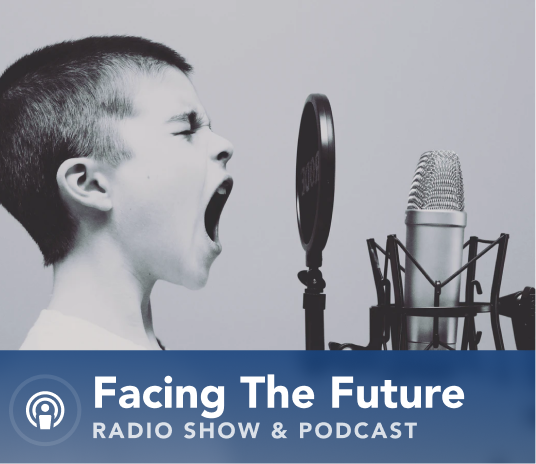This week on Facing the Future, we looked at the economics of immigration reform with Teresa Cardinal Brown, Senior Advisor for Immigration and Border Policy at the Bipartisan Policy Center.
Brown gave a comprehensive overview of the nation’s immigration system. She noted, however, “If you ask me if there is a mission statement for our immigration system, I’m not sure I could answer you, and maybe that’s where we should start – coming up with a mission statement. And then we can figure out what the system would look like after that.”
Most of the current discussion about immigration focuses on problems at the southern border. Brown described how the situation there has changed in recent years. Formerly, the problem of unauthorized migration at the southern border was mostly Mexican men looking for work. That meant “our border patrol facilities, for example, were built like your local police precinct. They had various cells that were meant to hold people for a couple of days, at most, before we could send them back to Mexico.”
“But what started happening about a decade ago,” she explained “is that we started seeing more and more people who weren’t Mexicans coming to the border, mainly from Central America, from the countries of El Salvador, Guatemala, and Honduras, and unlike previous decades these were not adult men who were coming to look for work and trying to sneak by border patrol. We had unaccompanied children and families who were turning themselves in and asking for asylum. Now this is important, because, even though someone enters the country illegally, our law is very clear that you are allowed to ask for asylum as soon as you’re on U.S. territory, no matter how you enter.”
Brown said that another consequence of the changing profile of unauthorized migrants is that “we can’t send non-Mexican people back to Mexico unless Mexico is willing to take them, and they don’t have to. That’s a negotiation that becomes foreign policy. So the more people that arrived that we couldn’t send right back to Mexico because Mexico wouldn’t take them, and we had to now apply this asylum process to, it started to overwhelm our facilities, which weren’t meant to hold people for very long, particularly families and children. We didn’t have enough asylum officers to interview people. Cases were sent to Immigration Court, and they became overwhelmed.”
We then turned to the economics of immigration and why it’s important for the nation’s future growth. The Congressional Budget Office (CBO) projects that the U.S. will have more deaths than births by 2040. Beyond that time, immigration will account for all of our population growth. That has profound implications for the size of the workforce and the potential growth rate of the economy.
Brown commented, “You mentioned the decline of fertility rates and the CBO projection, but another big part of this is that our largest generation is the baby boomers, and they are retiring. More and more people are reaching 65, and retiring out of the workforce. What that means is that we have fewer and fewer workers to support the aging, retiring population and with declining fertility rates, we’re not replacing them in the workforce. Most immigrants arrive at working age, so they start working immediately, whereas, if we were to increase our fertility rates, it would take at least 16 to 18 years before they enter the workforce. That’s not an instantaneous boost, but immigration is. And so, from an economic perspective, when we look at just those population and workforce issues, immigration is really the most obvious way that we can try to forestall some of the economic consequences of what we know our demographic predictions are going to look like.”
In looking at reform options, Brown said that comprehensive changes to the legal immigration system “would address the status of undocumented people in the United States. The CBO said that by bringing most of them into the formal workforce, we could now start collecting more regular taxes from them. And then, what do we do about new arrivals? How do we secure the border? How do we ensure that we are maintaining integrity and dealing with immigration enforcement? Those are the major sections of comprehensive immigration reform.”
Brown said we need to look to Congress for answers. “We’re not going to solve any of these things; we’re not going to get the economic benefits of immigration; we’re not going to manage the border better; we’re not going to deal with any of this unless Congress is willing to legislate. Congress has punted this issue many times. They really need to take the lead because without doing anything it’s not going to get any better. And I would say this no matter who’s in the White House because without a change in the law the President is limited in some of the things he can do. So I think we really need to lean on Congress to be the main player here.”
Hear more on Facing the Future. I host the program each week on WKXL in Concord N.H., and it is also available via podcast. Join us as we discuss issues relating to national fiscal policy with budget experts, industry leaders, and elected officials. Past broadcasts are available here. You can subscribe to the podcast on Spotify, Pandora, iTunes, Google Podcasts, Stitcher, or with an RSS feed. Follow Facing the Future on Facebook, and watch videos from past episodes on The Concord Coalition YouTube channel.





